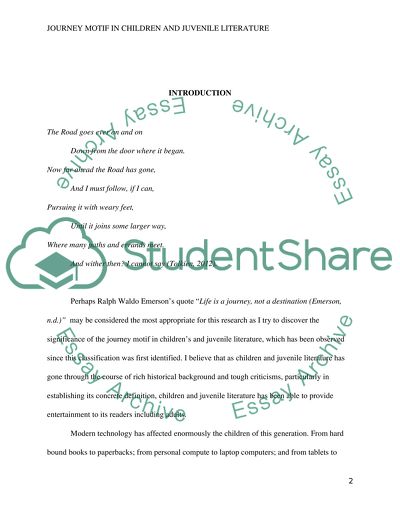Cite this document
(“Journey Motif in Children and Juvenile Literature Dissertation”, n.d.)
Retrieved de https://studentshare.org/literature/1484632-journey-motif-in-children-and-juvenile-literature
Retrieved de https://studentshare.org/literature/1484632-journey-motif-in-children-and-juvenile-literature
(Journey Motif in Children and Juvenile Literature Dissertation)
https://studentshare.org/literature/1484632-journey-motif-in-children-and-juvenile-literature.
https://studentshare.org/literature/1484632-journey-motif-in-children-and-juvenile-literature.
“Journey Motif in Children and Juvenile Literature Dissertation”, n.d. https://studentshare.org/literature/1484632-journey-motif-in-children-and-juvenile-literature.


